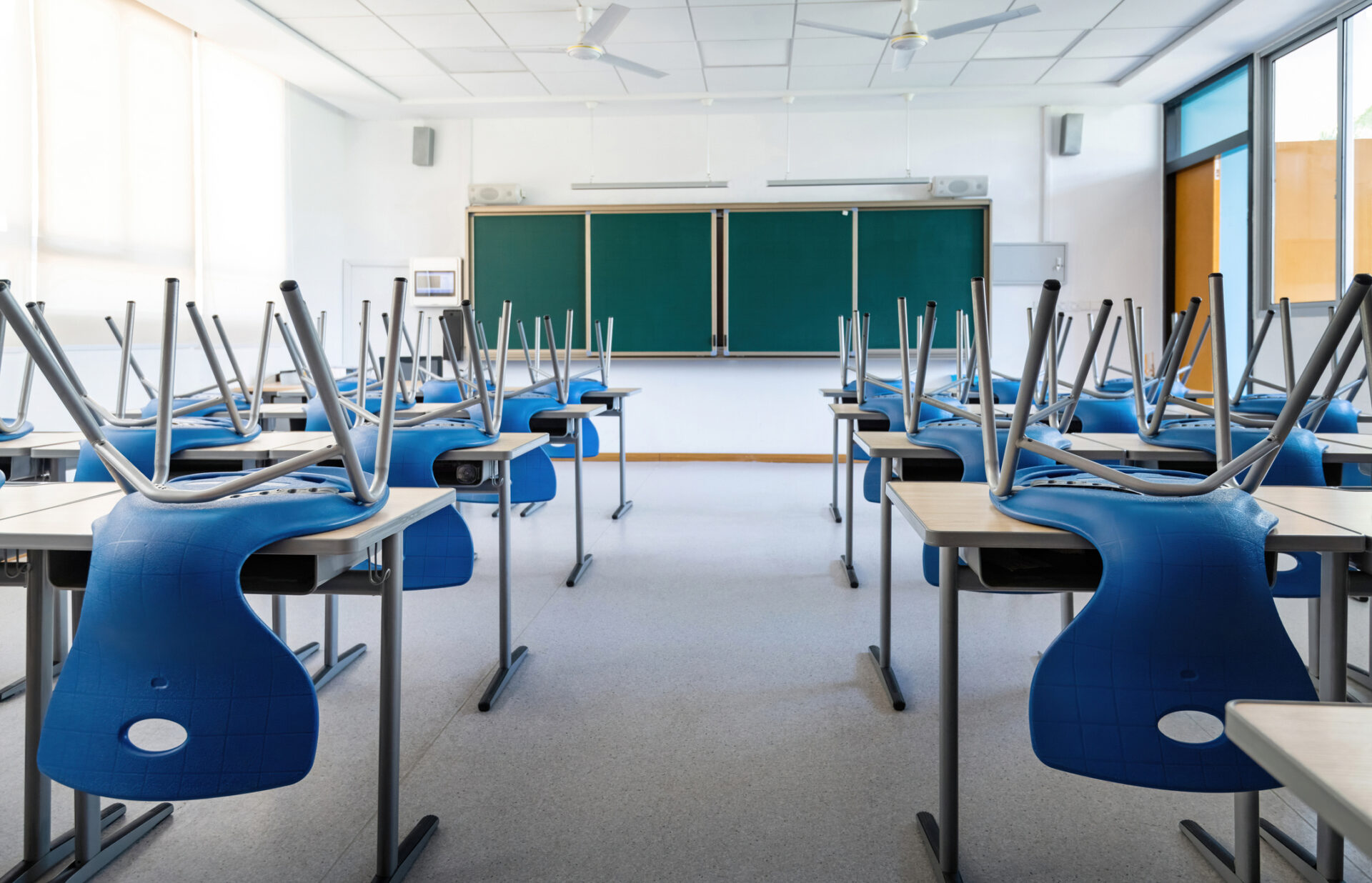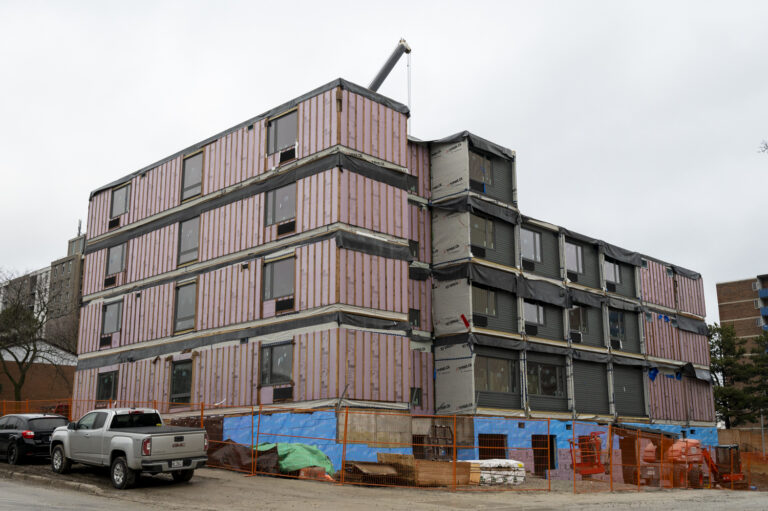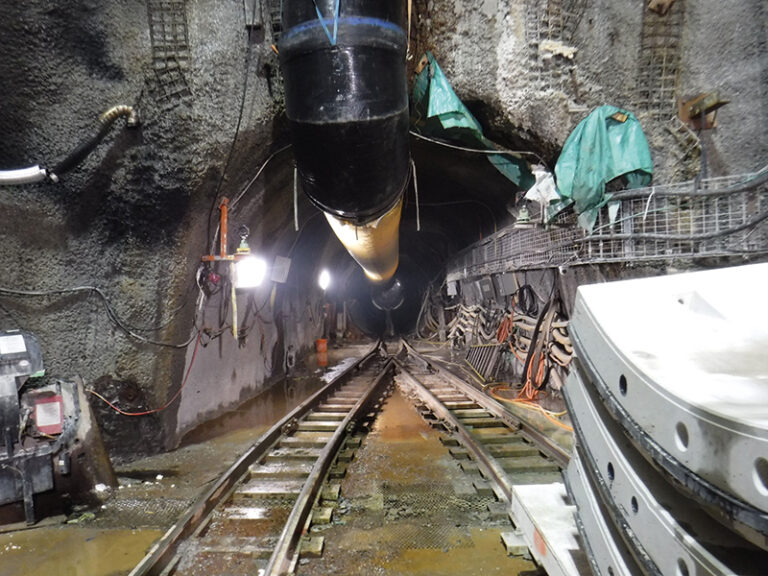By Jonas Roberts
Extreme and unpredicted weather due to climate change is no longer a distant threat—it’s already disrupting the day-to-day reality in Canada’s schools.
From stifling heat waves to wildfire smoke, extreme weather is jeopardizing children’s health and education.
In 2024, overheated classrooms became distressingly common, impairing students’ ability to learn and even risking heat-related illness. The stakes are especially high for younger children, who overheat faster and cool down slower than adults.
The Impact of Extreme Weather
Across Canada, schools constantly battle sudden snow squalls, freezing rain, and shifting storm tracks, leading to last-minute closures or unsafe conditions. This situation is part of a broader challenge faced by schools across the country, where hazardous travel conditions, make roads dangerous for travel. Surfaces such as highways, roads, walkways, and parking lots may become icy and slippery, increasing the risk of accidents and falls. There is also a possibility of utility outages due to the freezing rain and strong winds.
These conditions highlight the importance of early school closures to ensure the safety of students, staff, and parents. The impact on parents includes missed workdays or the need to work from home, which may not always be feasible. Sudden changes in daily routines can be challenging to manage, especially for families with multiple children or those who rely on school schedules for planning their day. Additionally, lower-income families are disproportionately affected when schools close unexpectedly, as they may not have access to childcare and may lose income for the day.
Protecting Schools in a Changing Climate
A missed forecast can mean thousands of students stranded or exposed to risk, while a false alarm disrupts learning. This isn’t just a scheduling issue, it’s a matter of safety, equity, and operational resilience. As climate volatility increases, Canada’s school system faces heightened pressure to adapt and make critical decisions to ensure the safety and continuity of education for students
Extreme heat is a top threat. In June 2025, a severe heat dome pushed humidex values above 40 °C in Ontario and Quebec, forcing schools—many without air conditioning in cities like Toronto, Ottawa, and Montreal—into crisis mode. Classrooms became dangerously hot, prompting closures and health warnings. Beyond the heat, floods, storms, and erratic winter weather are increasingly disrupting education across Canada, with 2022 floods in Ontario and B.C. forcing closures. Canada’s erratic and unpredictable weather patterns are significantly impacting schools and students.
Many schools, particularly in low-income, rural, and Indigenous communities, struggle with inadequate climate control and ventilation systems. This leaves students vulnerable to extreme temperatures and poor air quality, exacerbated by wildfire smoke. To better prepare and protect students, an advanced weather prediction system is essential. Such a system would enable school administrators to make informed decisions, ensuring the safety and well-being of all students.
The Challenges of Climate-Proofing Schools
Canada’s aging school infrastructure is increasingly vulnerable to climate extremes, with many buildings suffering from poor insulation and limited air conditioning, leaving students in unsafe learning environments.
Retrofitting schools with HVAC systems, insulation, and green infrastructure can cost $1–2 million per large school, with nationwide upgrades running into billions. Operational costs, such as summer AC use, add to that overall budget.. However, inaction could cost the country $500 billion annually by 2030.
Despite high benefit-cost ratios of up to 38:1, behavioral and political barriers, like short-term thinking and undervaluing future benefits, are delaying the needed investments. Logistical challenges, including tight construction schedules, contractor shortages, and structural issues in older buildings, further complicated efforts. Equity concerns also arise, as wealthier districts advance faster, leaving under-resourced and Indigenous schools behind.
To align climate resilience with sustainability, efficient retrofits using green technologies like heat pumps and solar panels are essential, supported by public-private partnerships and government grants to scale solutions equitably. Incorporating weather intelligence into the decision-making process ensures that investments in school infrastructure are both timely and effective, ultimately enhancing the resilience and sustainability of educational environments.
Strategies for Climate-Resilient Schools
To build climate-resilient schools, a comprehensive strategy is essential. Schools should install efficient cooling systems like heat pumps to maintain indoor temperatures below 26 °C, and where full air conditioning isn’t feasible, designate cooled spaces such as libraries or gyms. Retrofitting buildings with insulation, reflective roofs, and energy-efficient windows can reduce heat gain and improve energy use. Passive cooling methods, like blinds, natural ventilation, and adjusted school hours, can also help. Outdoor areas should be redesigned with trees, shade structures, and reflective surfaces to reduce heat exposure. Real-time monitoring of temperature and air quality enables timely responses, while clear emergency protocols for heat, smoke, and floods are vital. New schools must be built with resilient materials, backup power, flood defenses, and serve as community shelters. Policy support is crucial; governments should set temperature standards, fund upgrades, and integrate climate resilience into education planning.
Creating healthy and resilient schools long term can be accomplished by embracing technology and innovation. Advanced Weather Intelligence (AWI) systems now offer hyper-local forecasts and real-time alerts, enabling school leaders to make proactive decisions like adjusting schedules or canceling outdoor activities. Integrating Internet of Things (IoT) sensors allows continuous monitoring of indoor conditions, helping facilities teams respond swiftly to heat or air quality issues. Simulation tools and digital twins support long-term planning by modeling climate impacts and testing building designs. Smart infrastructure, such as solar panels with battery storage and automated load management, ensures resilience during power outages. Communication platforms like SMS alerts and multilingual apps keep families informed during emergencies. Innovative building materials—like reflective roofs and green walls—enhance passive cooling and student engagement. These technologies, when combined with proper training and planning, transform schools into adaptive, data-driven environments that can anticipate and respond to climate disruptions effectively, ensuring safety and continuity in education.
Collaboration Creates Healthier Schools
Building climate-resilient schools in Canada demands collaboration across governments, communities, and sectors. From the government perspective, provinces/territories must update building codes and cooling standards, while federal funding is needed for infrastructure and support Indigenous schools.
Within this broader effort, partnerships between schools and private sector experts, such as engineers, tech firms, and researchers, are essential. Engineers and architects can help design or retrofit school buildings with passive cooling, improved insulation, and flood-resistant features tailored to local climate risks. Tech firms can provide real-time weather monitoring systems, smart HVAC controls, and IoT-based sensors that alert staff to unsafe indoor conditions. Researchers can collaborate with schools to map climate vulnerabilities, analyze temperature data, and co-develop student-led projects that inform school upgrades. These partnerships often take the form of pilot projects, sponsored innovations, or curriculum-integrated initiatives, turning schools into living labs for climate adaptation and safety.
In June 2025, a severe heat wave hit Central Canada, exposing gaps in school climate resilience. Quebec allowed schools to close, helping to avoid heat-related health issues. Ontario, however, kept schools open, relying on temporary fixes like fans and misting stations, which proved inadequate. The contrast sparked public debate, prompting Ontario to commit to installing air conditioning in the hottest 25% of schools and developing a formal heat day policy. This case highlights the importance of decisive policy, infrastructure investment, and flexible strategies—like schedule changes or using schools as cooling centers—to protect students’ health and learning during climate extremes.
Severe weather conditions are already disrupting education in Canada, with extreme heat, storms, and wildfires threatening student safety and learning. Many schools remain unprepared, but solutions like efficient cooling, insulation, and shaded spaces are within reach. Investing now, rather than reacting later, can prevent costly damages. Equity must guide this transformation to ensure all children, regardless of background, learn in safe, resilient environments. With coordinated action, Canada can lead by example, creating greener, cooler schools that protect both students and the planet. The time to act is now.
Jonas Roberts is the Director of Digital Solutions for WSP in Canada.
Featured image: (Getty Images)












